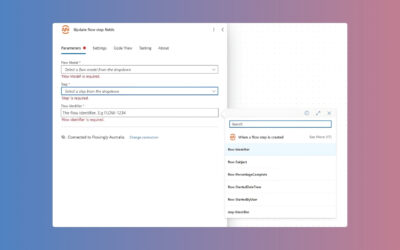We’ve bridged the gap between your automated workflows in Flowingly and getting deeper, more advanced data reporting – presenting the Power BI Connector.

Flowingly Product Update – Process Map Linking
Flowingly Product Update – Process Map Linking
Elevating Process Connectivity with Process Map Linking
Our latest update is about to redefine how you visualise and navigate your processes – introducing Process Map linking! Connecting processes and navigating seamlessly between them has never been more accessible.
What’s New?
🌐 Drag, Drop, and Link with Ease
For Flow Builders, the power to establish relationships between processes is now at your fingertips. Simply drag and drop the new component onto the canvas, and configure it by linking it to an existing published process map. Building connections between your maps has never been simpler.
✍️ Multiple Use Cases
Linked process maps will be a game-changer for teams in many ways – whether they’re used to build mega-sequential processes or as sub-processes within a process.
- Linking sequential processes together, where you’d link from the end of one process to the start of another. E.g. from Recruitment to Onboarding.
- Linking to sub-processes or other levels of process in the middle of a process. e.g. linking to the Raise Invoice process at a step within another finance process.
🔄 Effortless Navigation Between Linked Maps
As a user, experience a new level of process cohesion. Easily navigate between different linked maps and their parent map without leaving the page. No more bouncing between screens – everything you need is conveniently accessible in one central location.
👀️ View All Related Processes at a Glance
Imagine a workspace where all related processes and their details are seamlessly integrated. With Process Map Linking, users can view linked process maps, gaining a holistic perspective of interconnected workflows. No need to switch between tabs – everything you need is right there on the same page.
How It Works
- Drag and Drop the Process Map Linking component onto your canvas.
- Link the Process Map Linking component to an existing published process map.
- Users can effortlessly move between linked process maps and the parent map for a comprehensive view.
Ready to Elevate Your Workflow Experience?
Are you ready to embrace a new era of workflow connectivity? Explore Process Map Linking now and witness the seamless integration of related processes in one centralised space.
Check out our knowledge base article for a deeper understanding of how to use the new process linking functionality.








